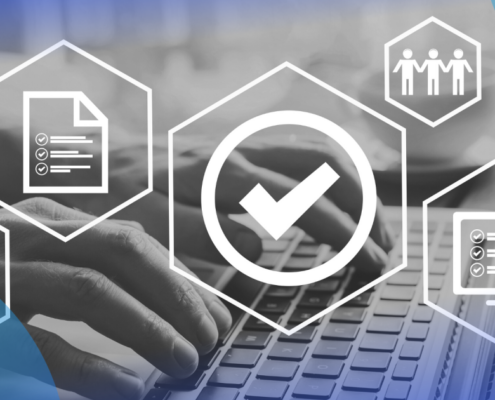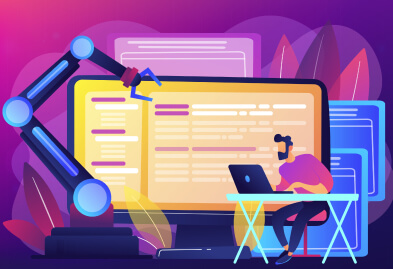
In an organization, your web portal is a representation of you and it needs to be well kept; this goes for both internal and external portals. Web portals are a reflection of an organization’s digital capabilities whether it be internal or external. A web portal provides at least one or multiple of these four essential services: search engine, email, links to other related sites, and personalized content. Most organizations as they grow have multiple systems not creating multiple sources of information. Because of these multiple sources of information users also need to go to multiple different places to retrieve information.
Organizations’ web portals should be all about end-user experience; it is no longer about what the organization wants but what the user needs. In this case, the users can be customers, employees, or partners. The most important part of a web portal to define its purpose. Is the portal for selling, information, outreach, a sales catalogue, etc. The purpose needs to be attributed with the audience and in-line with what the company is trying to achieve. Web portals are a central hub for information and communication, there are many types of web portals. Below we will be looking at 5 different types of web portals.
Different Types of Portals
Employee Portal
An employee portal (intranet) is a secure network where users can share and consume information within your company or organization. It allows for a number of different actions for organizations to deploy within the portal. It’s a big help in the Human Resources department, having a central repository that can be easily accessible and manageable.
This portal is used when an organization is trying to accomplish any or all of the following: employee engagement, workplace culture, and keeping information easily accessible. Overall, an employee portal helps lower turnover, according to Employee Engagement and Retention Report 56% of employees plan to actively seek a new job within the next 6 months. Employee portals also help to increase engagement because according to the State of the American Workplace report only 16% of employees feel engaged in the workplace.
Benefits of an Employee Portal:
• Centralizing information
• Improved communication
• Improved collaboration
• Document management
• Increase Productivity
• Strong Company Culture
Customer Portal
A customer portal gives customers complete visibility into their interactions with an organization. They can track key metrics, support requests, or documents and other information that can be easily shared. It helps to provide a secure and open forum for collaboration between organizations and their customers. It allows customers to help themselves through self-service, allowing customers to get in touch with organizations, provides contextual information and is extremely convenient.
A customer web portal is one tool that can offer consumers the outstanding digital experience they expect. This portal is essential to delivering great customer service. In fact, 89% of U.S. consumers expect companies to have a customer web portal. Furthermore, 75% of consumers say self-service is convenient, while 67% say they prefer this option to speaking to an agent.
Benefits of a Customer Portal:
• Creating and tracking support tickets
• Distributing policies and documents
• Managing purchase orders and tracking order deliveries
• Looking up quotes and invoices
• Sharing detailed FAQ information
• Tailor content to specific customer
Click here to read more on customer web portals
All web portals have a purpose and that purpose cannot be forgotten during or after a web portal is implemented.
Partner Portal
A company sets up a partner portal to connect, communicate, and engage with partners it already has. The partner portal user interface needs to be designed around access to relevant information, the productivity of partner users, driving workflow, and providing actionable feedback.
The portal should have the tools that partners need to build revenue, create marketing programs, and educate their teams. This can be specific to the partner or something for all partners like a repository for images, logos, and or case studies. Access to information could help to align services and be more productive for both organizations.
Partner Portal Benefits:
• Promotions or discounts
• Service memos tailored to individual partners
• Recruitment and onboarding information
• Registration and approvals
• Content library
• Measuring and reporting tools
• Information not available to the general public
Franchisor and Franchisee Portal
The Franchisor and Franchisee portal is a subcategory of a partner portal. A Franchisor gives access to relevant news, company updates, opportunities, and repositories. A franchisor sets up a partner portal to connect, communicate, and engage with its franchisees. Benefits are the same as the partner portal above.
B2B E-commerce portal
A B2B portal is a place where users can manage relationships with suppliers. This provides access for B2B customers to do online ordering, check order status, payment status, and product information all without human interaction and on a device of their choice. This is a portal where an organization is selling to another organization and not to an end-user.
Customers can have easy access to key information and knowledge means they can solve problems faster and avoid having to call customer service. Users can gain knowledge through sharing information on group chats and by using product forums.
Benefits of B2B E-commerce Portal:
• Wholesale customers management
• Supplier management
• Wholesale customer online login management
• Stock inventory
• Payment transaction tracking
• Login account management
• Customized reports
• Calendar and communication module
Considerations of Implementation
Organizations need to know when it is important to implement web portals and how they can help organizations in their digital capabilities. All web portals have a purpose and that purpose cannot be forgotten during or after a web portal is implemented. If the thought about implementing a web portal becomes a topic of concern then it is time to start planning.
No matter which portal an organization is implementing it needs to be relevant to the audience a company is targeting. An organization should want their web portal to be a one-stop-shop for whoever their audience is and check all the boxes. A web portal should have everything a user needs in one place instead of having to search multiple places or speak to multiple people for information. It should serve as the main place for information for an organization. If built right it can be a central hub of collaboration for an organization.











